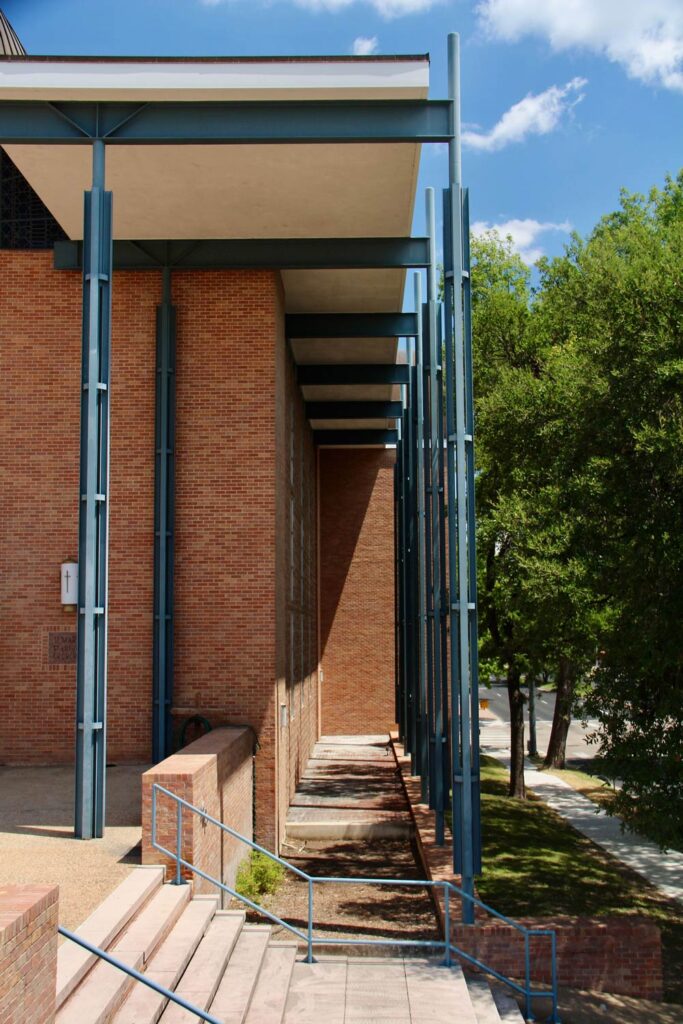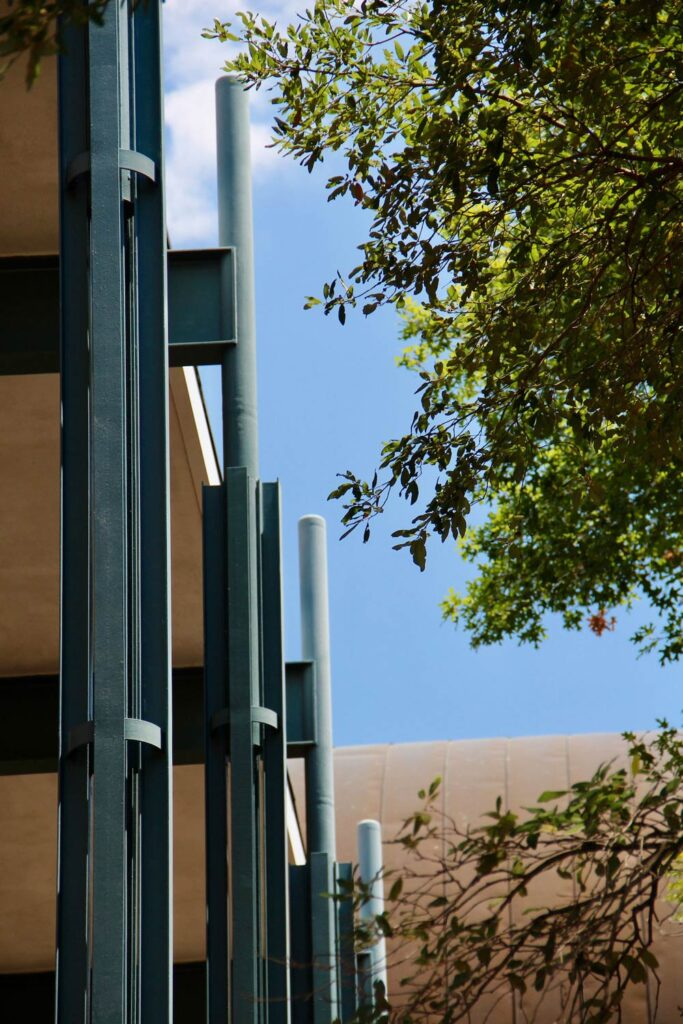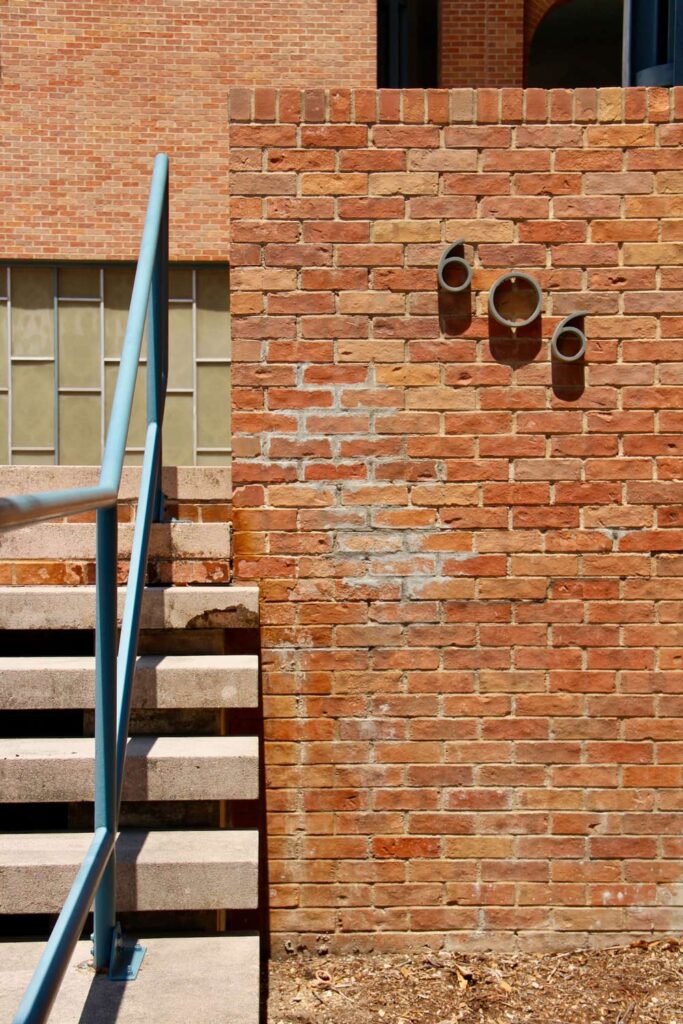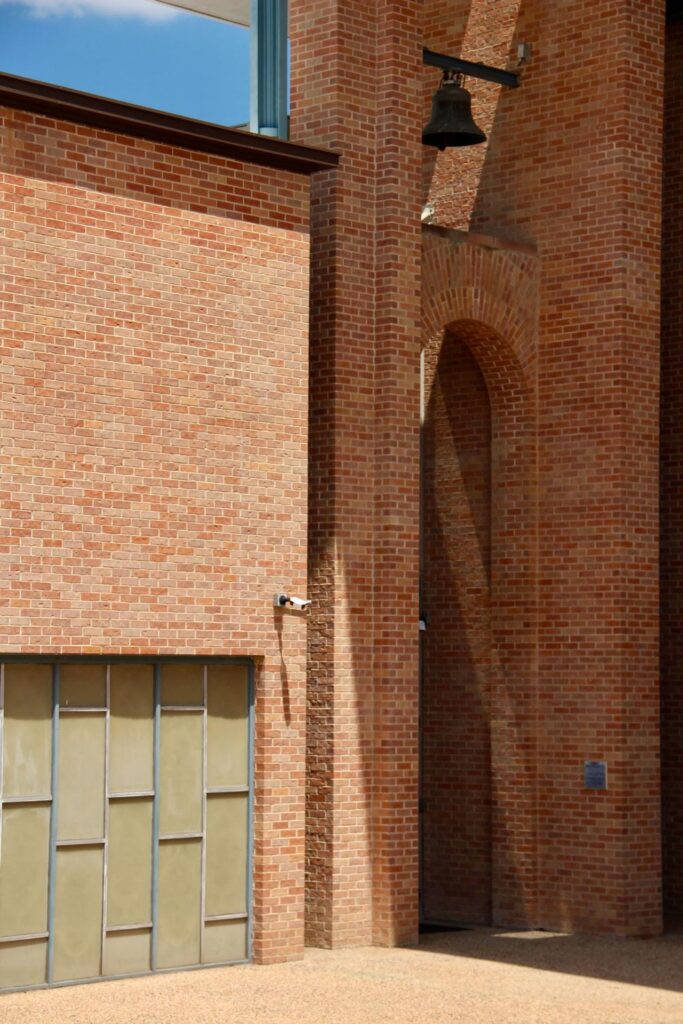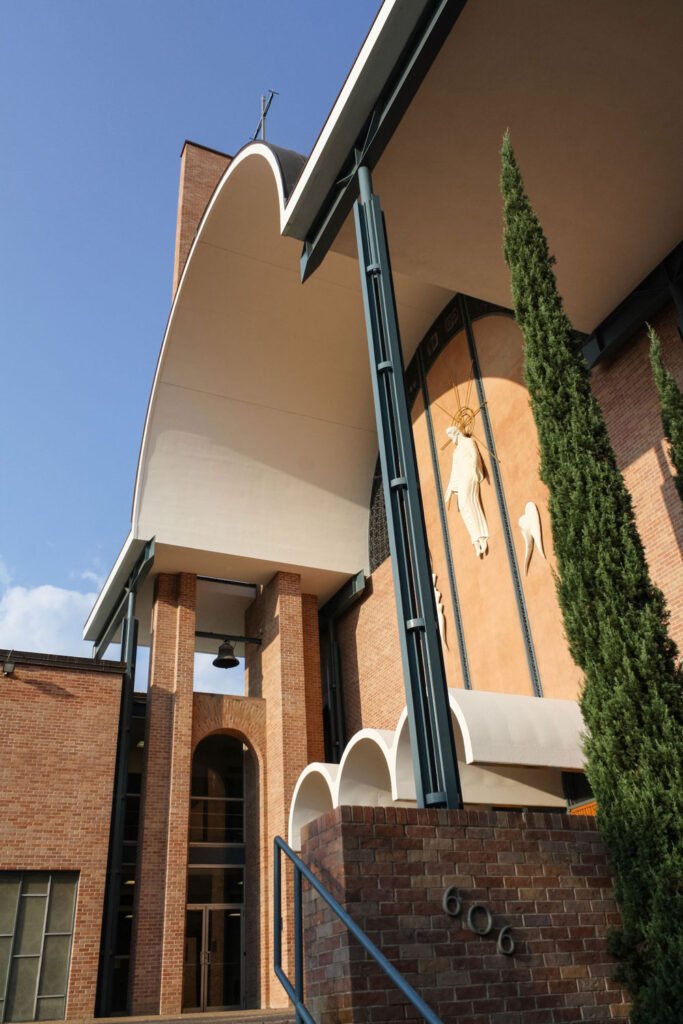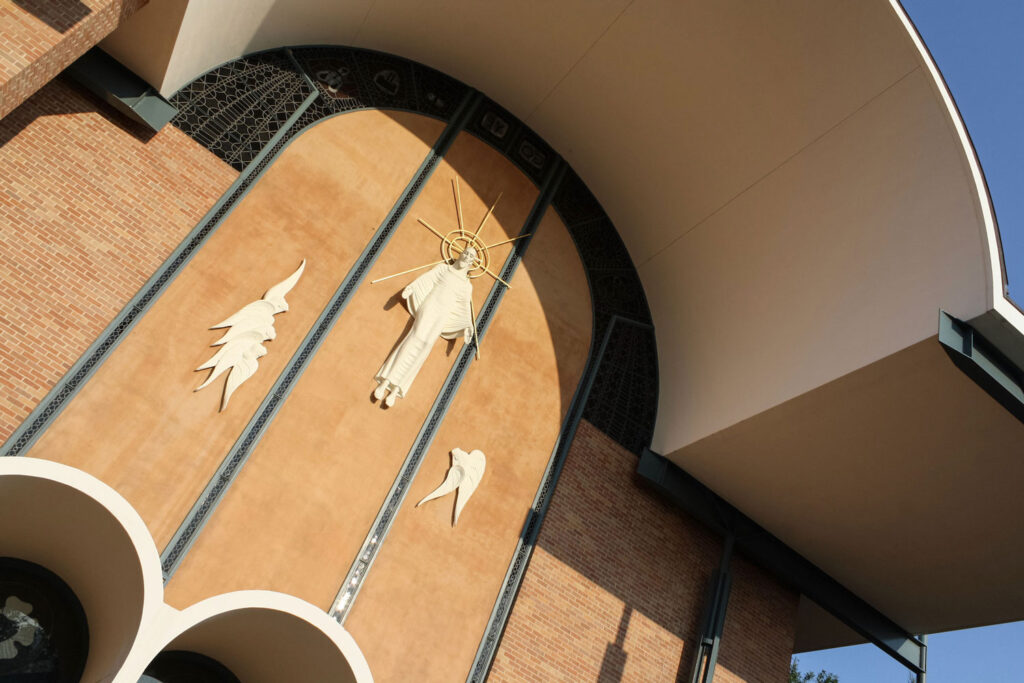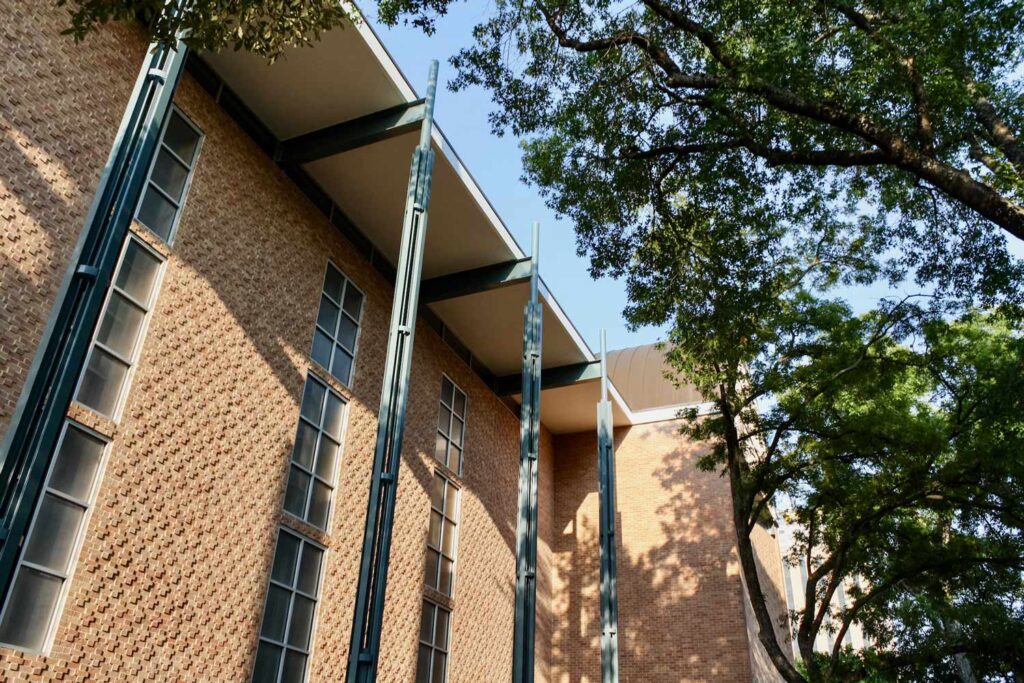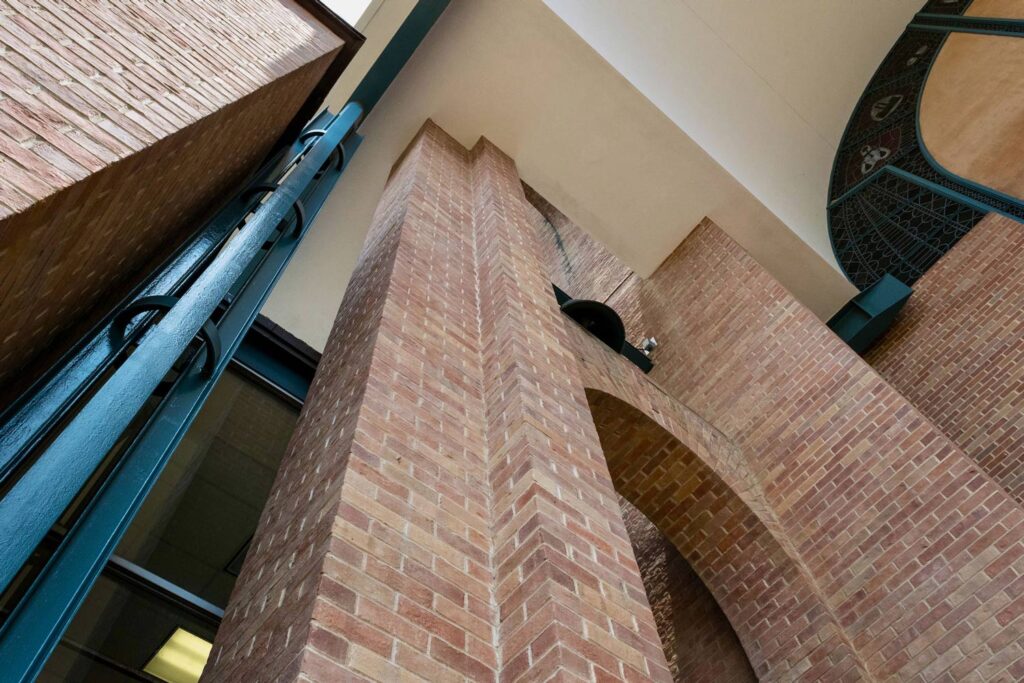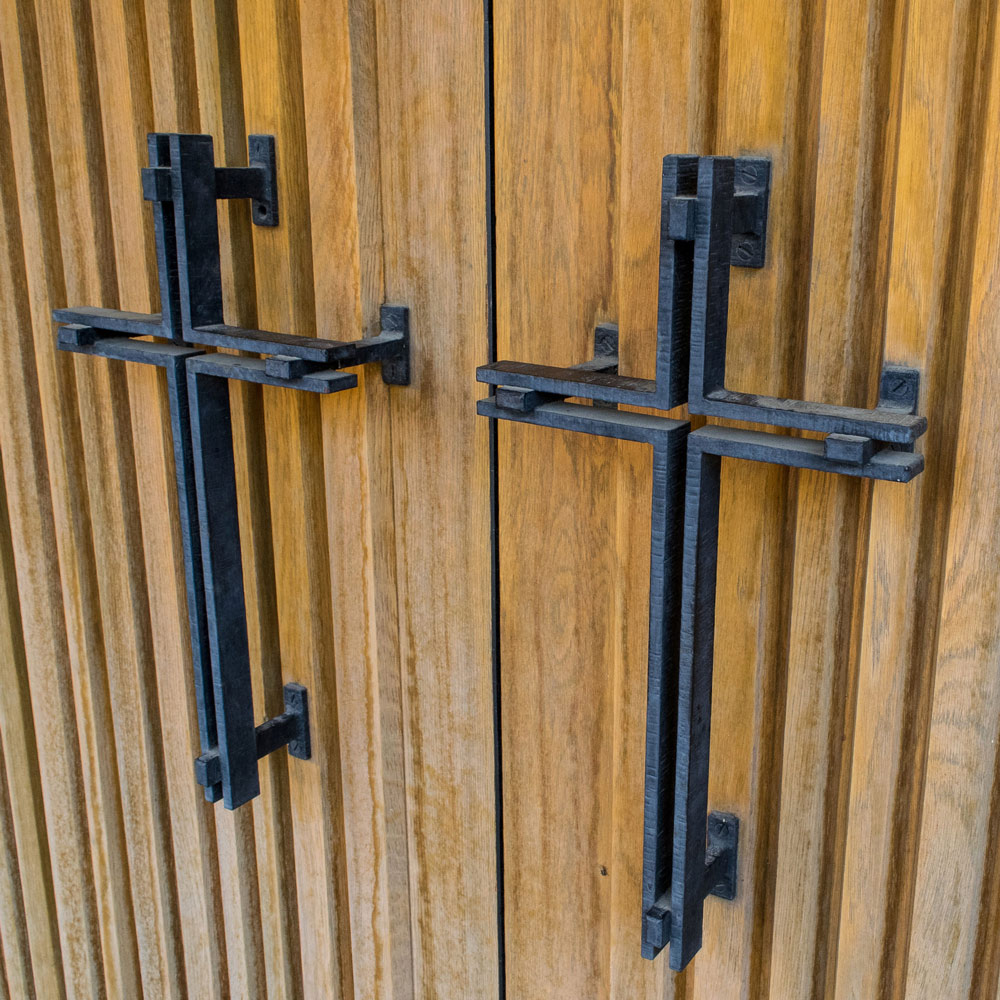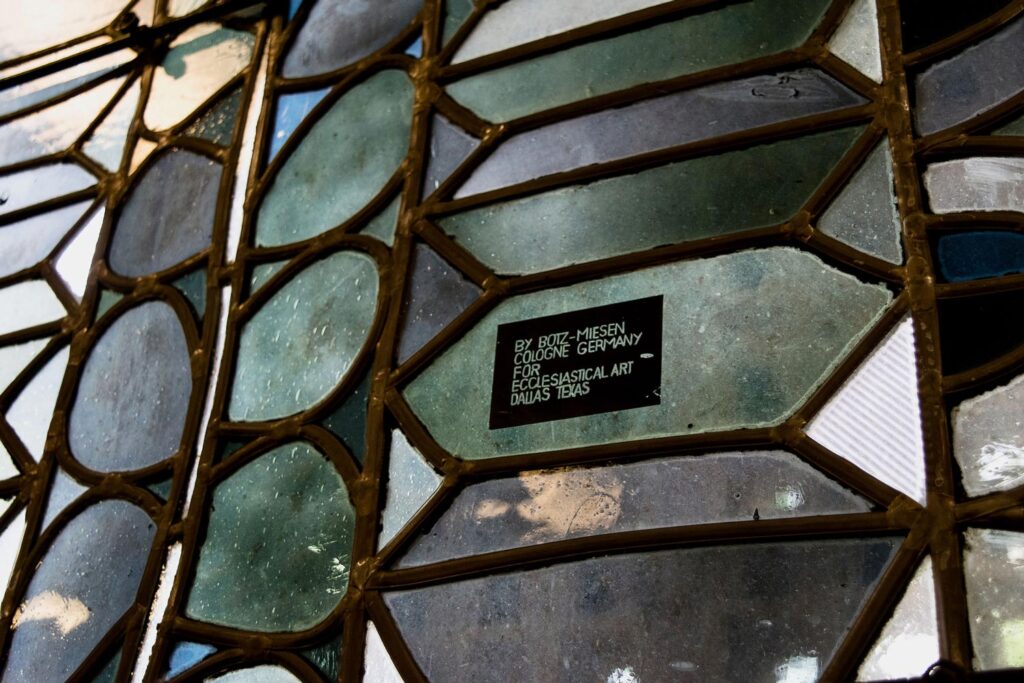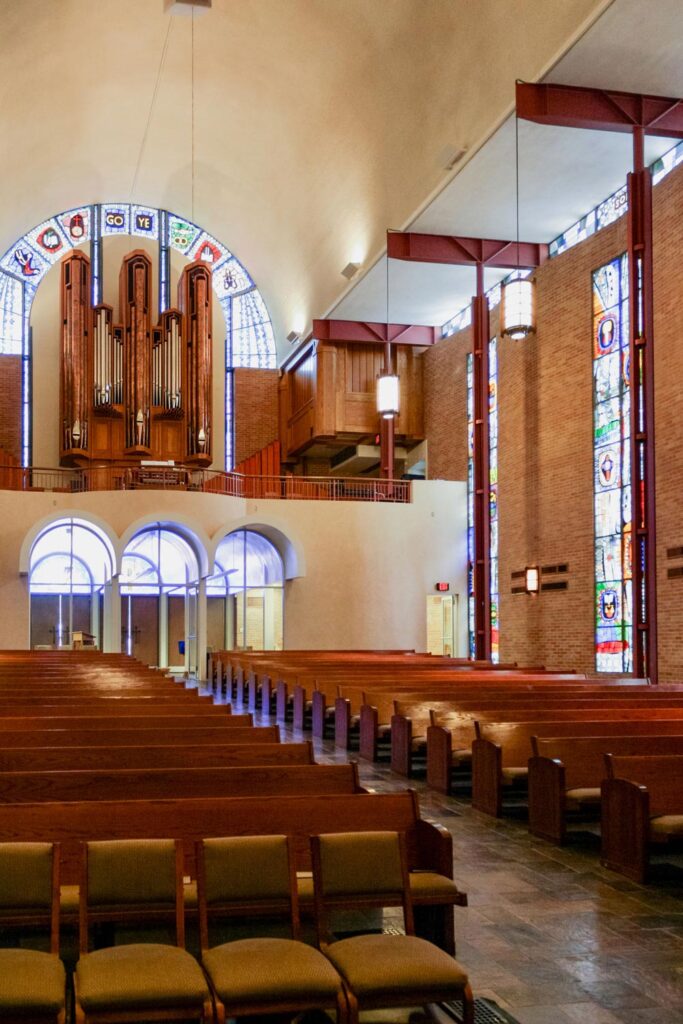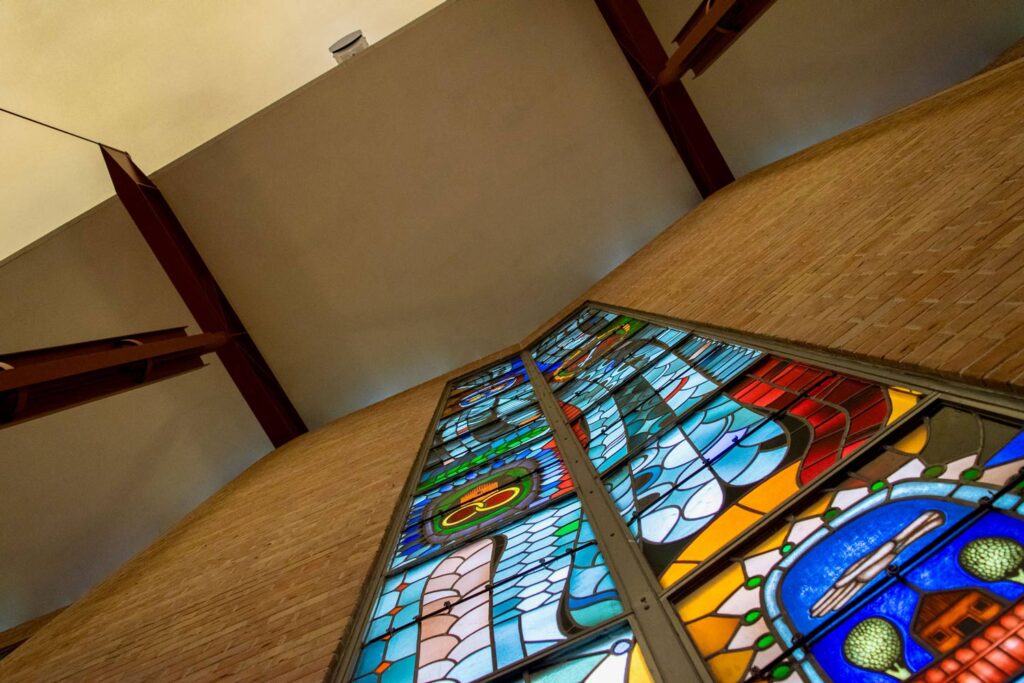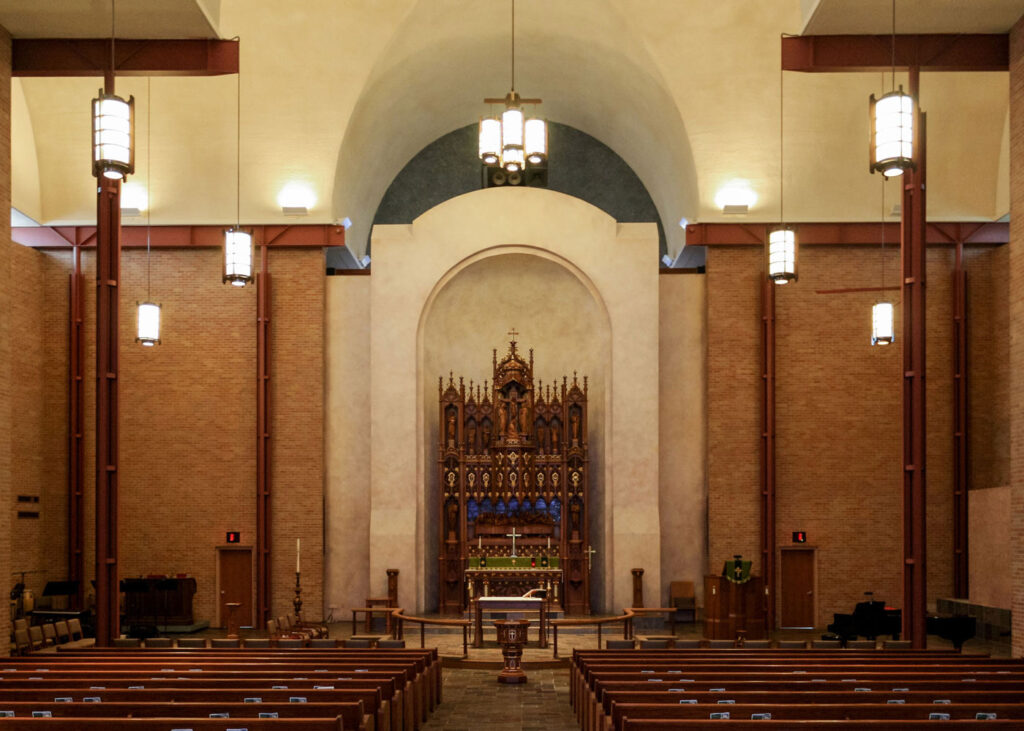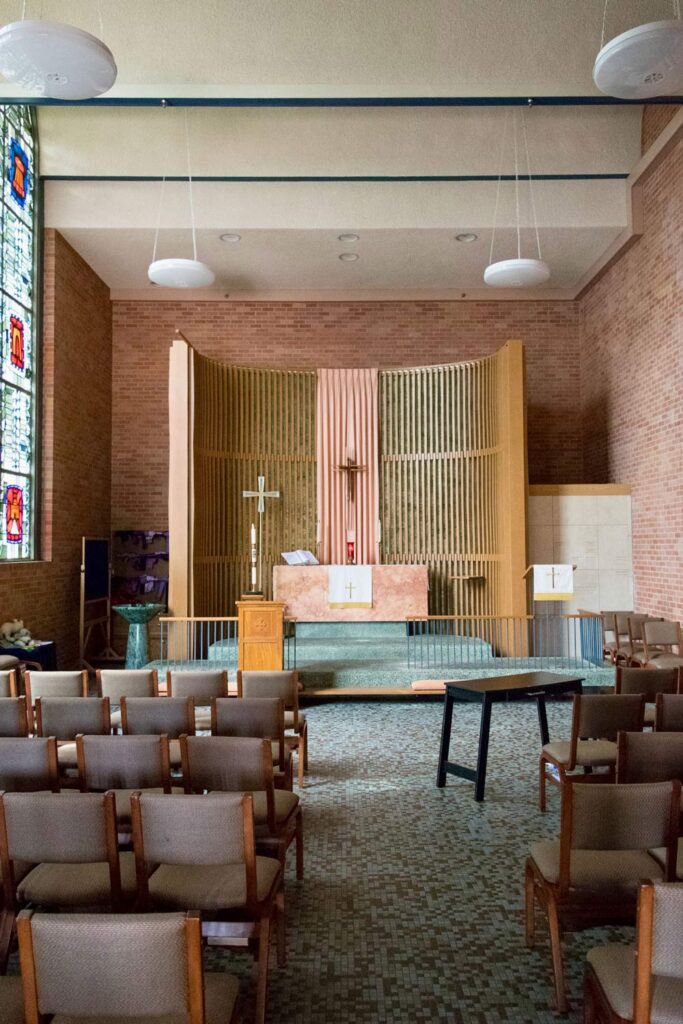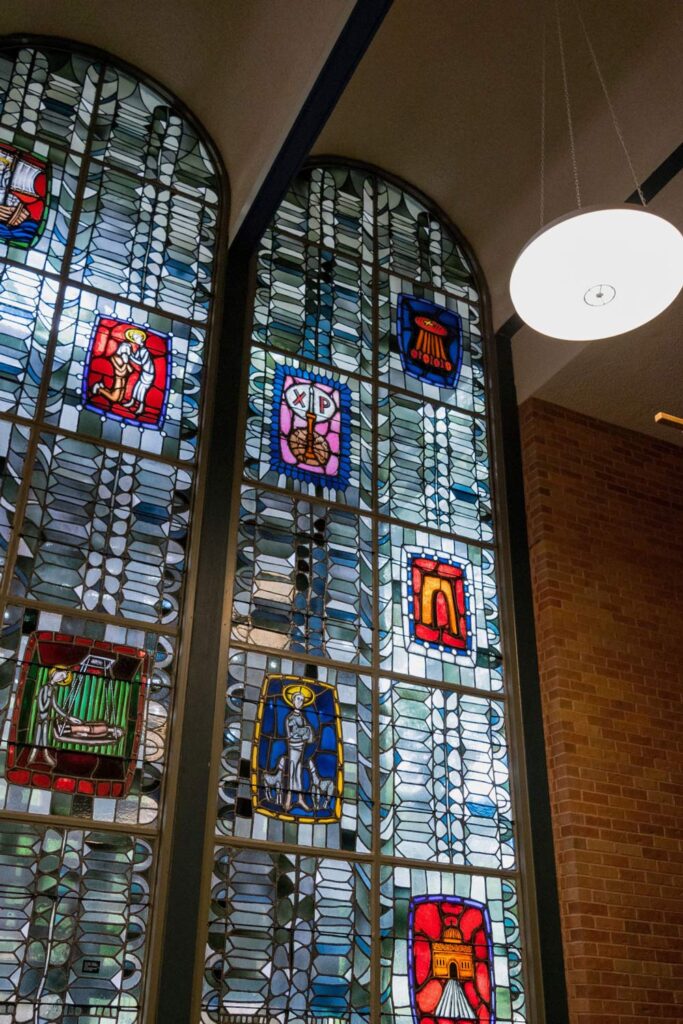- Built:
- 1960
- Architect:
- Robert George Mather (Jessen Jessen Millhouse & Greeven)
- Style:
- Mid-Century Modern
- Historic Status:
- National Register of Historic Places
Description
St. Martin’s moved to its current location on the corner of 15th Street and Rio Grande in 1960. The building’s iconic barrel-vaulted roofline, teal-painted steel frame, and modern stained glass are hallmarks of its Mid-Century Modern design.
Placemaking
The boldly Modernist St. Martin’s Evangelical Lutheran Church is a quintessential example of Mid-Century Modernism in Austin, and is unique among modern church architecture. In the 1950s, displaced by the expansion of the Texas State Capitol, the congregation of St. Martin’s took advantage of the opportunity to build a church that reflected the changing worship and denominational identity of Lutherans, while continuing to respect their traditions.
Perhaps the building’s most notable feature, a strikingly thin triple-barrel vault ceiling appears to float above the walls from the approach to the entry courtyard. As a Mid-Century Modern interpretation of the early Roman Christian Basilica typology, the design is at once progressive, dynamic, and radical in its expression but also formal, processional, and traditional in its bearing. The verticality of the bell tower and free-standing cruciform columns contrasts with the horizontality of the concrete roof, which extends over the entry in a welcoming gesture. The distinctive barrel vault profile was made possible by the clever use of an off-the-shelf, wartime Quonset hut rib structure—a perfect marriage of new technologies and ancient form.
Architect Robert Mather designed the church while working for the local firm Jessen Jessen Millhouse & Greeven (later Jessen Associates), the firm responsible for many Modernist landmarks in Austin. Mather had previously studied under Mies van der Rohe and worked under Walter Gropius, two titans of International Modernism. Their influence can be clearly seen in the contrast between the floating planes dividing space within a system of built-up cruciform columns and expressive steel frames.
Founded by German immigrants, the congregation maintained its European connection; as a result, the design references contemporary German church architecture more than the designs of typical suburban churches in America. This was appropriate for a church making the conscious decision to stay downtown when so many others were departing for the new suburbs.
The art program was an integral part of the design of the church. The pastors, architects, and artists worked together to ensure that every component of the building reinforced the liturgical and denominational identity embodied in the building. The stained glass was modeled after the windows on the Dominikus Böhm-designed Maria-Koenigin Kirche, Köln-Marienburg (1953) and executed by the Botz-Miesen Stained Glass Studio of Cologne to designs most likely from the Böhm studio. Set within the free-flowing abstract pattern are an original set of symbols chosen by the pastors to reflect the church’s worship and theology.
The building also incorporates the work of local artists and artisans—most notably sculptor Charles Umlauf, who created the figures on the main facade. Entitled “Come Unto Me,” the work depicts Christ in a pose of invitation flanked by angels. This welcoming message complements the deep projection of the barrel-vaulted roof and canopies that tie the building and courtyard landscape together. Local ironsmiths at F. Weigl Iron Works crafted the ornamental cruciform door pulls, altar rails, prie-dieu (prayer desk), sedilia (altar seats), and other sanctuary furnishings. Other architectural features created by this foundry (whose workshop is now Iron Works BBQ) adorn the Texas State Capitol and The Driskill Hotel as well as other modern Austin landmarks. Woodcarvings throughout the building came from the local master carpenter Peter Mansbendel.
The architecture of St Martin’s optimistically reflects changes underway in the Lutheran Church at the time of its construction: a shift from Old World national synods to a new unified identity of American Lutherans. But far from representing merely a moment in time, the church to this day occupies pride of place as the central “cathedral” church for Lutherans in Austin and a home for the arts. – Jason John Paul Haskins, AIA
Bud Franck, AIA (1-5)
Jason John Paul Haskins, AIA (6-20)

